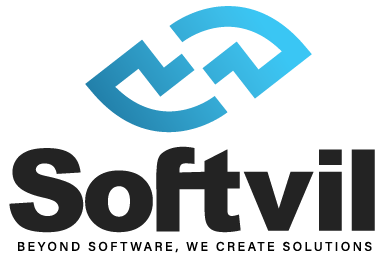In the dynamic landscape of software development, the real-world impact of software bugs cannot be overstated. These glitches can lead to operational disruptions, security vulnerabilities, and compromise user experiences, emphasizing the critical need for robust quality assurance measures. Software testing companies play a pivotal role in mitigating these risks, ensuring the seamless functionality and reliability of software products. This introduction delves into the fundamental aspects of software quality assurance and testing, exploring the intricate relationship between identifying and rectifying software bugs and the overall quality of the final product. By understanding the significance of effective testing processes, businesses can safeguard their reputation, enhance customer satisfaction, and stay competitive in an ever-evolving digital environment.
Practical Approaches to Software Testing

Exploratory Testing Techniques: Unleashing Adaptive Testing
In the arsenal of practical software testing, exploratory testing techniques stand out for their dynamic and adaptive nature. At Softvil Technologies, also known as Softvilmedia, skilled testers engage in spontaneous exploration, going beyond scripted scenarios to uncover nuanced software issues. This approach ensures a comprehensive examination, revealing unforeseen challenges that might elude conventional testing methods.
Realistic Test Scenarios and Use Cases: Mimicking Real-World Interactions
Crafting realistic test scenarios is a cornerstone of effective testing methodologies. Softvil excels in developing tailored scenarios that closely mimic real-world usage, allowing testing teams to simulate diverse user interactions. By embracing scenarios that mirror actual usage, testers identify potential bugs and vulnerabilities, ensuring robust software performance in varied conditions.
Importance of Usability Testing in User-Centric Applications: Elevating User Experience
Usability testing takes centre stage in the user-centric paradigm, emphasizing the end-user’s experience beyond mere functionality. Softvil places a premium on usability testing, evaluating software for user-friendliness and intuitiveness. This ensures that not only are bugs addressed, but the software interface aligns seamlessly with user expectations, contributing to heightened satisfaction and loyalty.
In navigating the practical landscape of software testing services, Softvil’s expertise in exploratory testing, realistic scenarios, and usability testing converges to deliver software products of exceptional quality and user satisfaction.
Hands-On Experience with Testing Tools

Setting Up and Running Tests with Selenium: Empowering QA Engineers
When hiring QA engineers, proficiency with testing tools is a crucial skill set. Selenium, a powerful open-source automation tool, plays a pivotal role. QA engineers, adept at setting up and running tests with Selenium, can ensure comprehensive test coverage, identify bugs efficiently, and contribute to the overall software quality. The hiring process for QA engineers is streamlined when candidates exhibit hands-on experience with Selenium, showcasing their ability to navigate this essential testing tool.
Practical Applications of JUnit and TestNG in Test Automation: Streamlining Testing Processes
In outsourcing software testing, the practical applications of JUnit and TestNG in test automation become indispensable. QA engineers leverage these testing frameworks to automate test cases, ensuring efficient execution and accurate results. These tools aid in maintaining a structured and organized testing environment, making them integral to the outsourcing process. Demonstrating proficiency in applying JUnit and TestNG in real-world scenarios is a valuable asset for QA engineers in the competitive landscape of software testing outsourcing.
Utilizing Performance Testing Tools for Scalability: Ensuring Robust System Performance
Efficiently outsourcing software testing involves evaluating performance testing tools for scalability. QA engineers, equipped with the skills to utilize tools such as LoadRunner or Apache JMeter, can assess a system’s ability to handle varying workloads. This hands-on experience ensures that applications perform optimally under different conditions, guaranteeing scalability and reliability. In the hiring process, QA engineers showcasing expertise in performance testing tools contribute to the success of outsourced software testing projects, reinforcing the importance of practical skills in optimizing overall system performance.
Building Effective Test Cases

Strategies for Creating Comprehensive Test Cases: The Foundation of Quality Assurance
In outsourcing software testing, the construction of effective test cases is fundamental to ensuring the quality and reliability of software products. Establishing robust strategies for creating comprehensive test cases is pivotal. Software testing services, like those provided by industry leaders, prioritize meticulous planning. This involves identifying key functionalities, defining test objectives, and mapping out test scenarios to guarantee thorough coverage. Such strategies not only expedite the testing process but also enhance the overall effectiveness of quality assurance measures.
Incorporating Edge Cases and Boundary Testing: Uncovering Hidden Vulnerabilities
A critical facet of test case design is the incorporation of edge cases and boundary testing. Software testing services recognize the importance of exploring the extremes of system inputs to identify hidden vulnerabilities. Incorporating edge cases ensures that software can handle unexpected scenarios, contributing to a more robust and resilient product. This meticulous approach, often employed by reputable outsourcing partners, strengthens the reliability and security of the software under examination.
Agile Testing Practices

Implementing Testing in Agile Environments: Synchronizing Quality Assurance
In software quality assurance, integrating testing practices within Agile environments is paramount. Agile methodologies, characterized by iterative development cycles, demand seamless integration of testing processes throughout the software development lifecycle. Software testing companies adept at implementing testing in Agile environments ensure that quality assurance activities are aligned with sprint objectives, facilitating rapid feedback loops and enhancing overall product quality.
Collaborative Testing in Scrum Teams: Fostering Synergy for Quality
Collaborative testing within Scrum teams lies at the heart of Agile testing practices. Software testing companies recognize the importance of fostering synergy among cross-functional team members to achieve testing objectives effectively. In Scrum teams, testers collaborate closely with developers, product owners, and other stakeholders to prioritize testing efforts, address emerging issues, and deliver high-quality increments within short iterations. This collaborative approach enhances communication, accelerates problem-solving, and drives continuous improvement throughout the Agile process.
Balancing Speed and Quality in Agile Development: The Agile Conundrum
Balancing speed and quality poses a significant challenge in Agile development environments. Software testing companies navigate this conundrum by adopting strategies that emphasize incremental testing, automation, and risk-based testing approaches. By prioritizing critical functionalities and implementing automated regression testing, Agile teams can maintain velocity without compromising product quality. Through iterative refinement and adaptive planning, Agile testing practices facilitate the delivery of value-driven software solutions while upholding stringent quality standards. This delicate balance ensures that software products meet user expectations and remain competitive in dynamic markets.
Debugging and Defect Resolution

Practical Tips for Debugging Code Effectively: Navigating the Development Maze
In the landscape of outsourcing software testing, mastering the art of debugging is crucial for ensuring the delivery of high-quality software. Practical tips for debugging code effectively include leveraging debugging tools, setting breakpoints judiciously, and employing systematic error isolation techniques. Software testing services providers proficient in debugging empower their teams to swiftly identify and rectify issues, minimizing downtime and accelerating the development lifecycle.
Efficient Defect Reporting and Tracking: The Pillars of Accountability
Efficient defect reporting and tracking mechanisms are cornerstones of effective software testing services. Establishing a robust defect reporting process ensures that identified issues are communicated clearly, including relevant details for developers to address them promptly. Utilizing tracking tools and methodologies allows teams to monitor the status of defects, fostering accountability and enabling timely resolution. This approach enhances the overall efficiency of defect resolution workflows in the context of outsourcing software testing projects.
Collaborative Approaches to Defect Resolution: Strengthening Cross-Functional Bonds
In the dynamic realm of software development, collaborative approaches to defect resolution are imperative. Successful outsourcing software testing services often emphasize cross-functional collaboration, fostering open communication channels between developers, testers, and other stakeholders. Collaborative problem-solving sessions, regular team meetings, and shared documentation contribute to a collective understanding of defects and streamline their resolution. By cultivating a culture of collaboration, software testing service providers enhance their agility, responsiveness, and ultimately, the quality of the software under development.
Conclusion
In conclusion, navigating the intricacies of software testing and quality assurance demands a holistic understanding of fundamental principles and practical applications. The critical role of software testing companies, like Softvilmedia, becomes evident in the dynamic landscape of bug identification, resolution, and overall quality enhancement. Practical approaches, including exploratory testing and hands-on experience with testing tools, are essential for adapting to real-world scenarios and delivering software products of exceptional quality. Moreover, the incorporation of effective test case design and agile testing practices is pivotal in aligning development processes with industry demands. Debugging and defect resolution, guided by collaborative and proactive strategies, stand as pillars in ensuring software excellence. As the industry continues to evolve, the balance between speed and quality, along with the collaborative ethos in defect resolution, emerges as a key focus for achieving sustainable success in the ever-competitive realm of software development and testing.
FAQs
Software testing identifies and resolves defects, ensuring that software meets functional and performance requirements, and enhancing its overall quality and reliability.
Exploratory testing allows testers to dynamically explore software, identifying unexpected issues that might not be covered by scripted scenarios, and enhancing bug identification.
Common tools include Selenium, JUnit, and TestNG. They automate testing, streamline processes, and improve efficiency in identifying and addressing software issues.
Softvil emphasizes hands-on experience with tools like Selenium, ensuring their testing teams are proficient in leveraging automation for comprehensive test coverage.
Edge cases and boundary testing ensure that software can handle extreme conditions, revealing hidden vulnerabilities and improving the robustness of test case design.
Agile testing strategies include continuous testing, early test planning, and collaboration among cross-functional teams to align testing with iterative development cycles.
Collaboration ensures effective communication between team members, promotes shared responsibility, and accelerates problem-solving, fostering overall quality in Agile development.
Balancing speed and quality challenges are addressed through risk-based testing, automation, and iterative planning to maintain a sustainable pace without compromising quality.
Successful test case design has prevented critical system failures in production, reduced post-release defects, and improved overall customer satisfaction.
Collaborative defect resolution involves open communication, shared problem-solving, and collective learning, fostering stronger bonds and a unified approach within development teams.
About Softvil
Softvil Technologies is a global leader in software quality assurance and testing services, catering to clients worldwide. With a proven track record of excellence, Softvil leverages cutting-edge technologies and methodologies to ensure the seamless functionality and reliability of software products. Softvil’s experienced team of QA engineers specializes in comprehensive testing, including exploratory testing, hands-on experience with testing tools, and agile testing practices. Softvil Technologies is committed to delivering high-quality solutions, optimizing software performance, and exceeding client expectations in the ever-evolving landscape of software development.

